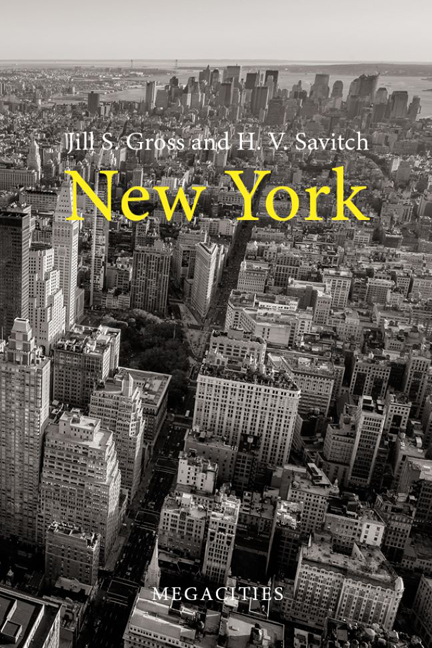Book contents
- Frontmatter
- Contents
- Preface and acknowledgements
- 1 Introduction: New York as a megacity
- 2 Crises, breakdowns and New York’s endurance
- 3 Building a global megacity: corporate- centred urban development and leadership
- 4 Expanded governance in the megacity
- 5 Neighbourhoods, diversification and gentrification in the megacity
- 6 Globalization in the megacity
- 7 Conclusions
- References
- Index
1 - Introduction: New York as a megacity
Published online by Cambridge University Press: 20 January 2024
- Frontmatter
- Contents
- Preface and acknowledgements
- 1 Introduction: New York as a megacity
- 2 Crises, breakdowns and New York’s endurance
- 3 Building a global megacity: corporate- centred urban development and leadership
- 4 Expanded governance in the megacity
- 5 Neighbourhoods, diversification and gentrification in the megacity
- 6 Globalization in the megacity
- 7 Conclusions
- References
- Index
Summary
A megacity is a giant city whose urban core and surrounding localities hold ten million or more people. As a practical matter, megacities vary from coun-try to country, but one common trait is its gigantism, stemming from its population, its economy, its governance, its geography and its social makeup. Megacities may be called metropolises (America), agglomerations (Europe) regions (China) or the “Greater” city (as in “Greater London”). This identi-fication touches only the surface of what a megacity is about. The megacity's gargantuan dimensions include the magnitude of its society and its built envi-ronment, the extensiveness of its commerce, the scope of its policies and the complexity of its operations. Added up, the sheer weight of the megacity exerts a prodigious influence on the nation and sometimes on the world.
Not all megacities are able to merge these qualities into a synergistic whole, but New York amply succeeds. New York's City's population alone holds 8.3million – add more than 7 million in its near suburbs and we have a com-posite of 15 million people, sitting on more than 4,000 square miles of land (Statista 2019; US Census Bureau 2020b). The New York megacity holds more people than modestly sized but important nations such as Belgium, Israel, Sweden or Greece. Its land mass is about the same size as South Korea or the Netherlands. Its gross metropolitan product (GMP) of more than $1.53 tril-lion surpasses the gross national product of most nations of the world, and its economic influence reverberates across continents. Much as New York's pros-perity continues to buoy markets abroad, its fiscal collapse in 1975 and later in 2008, sent shock waves through the most advanced economies of Europe, Asia and the Americas. Clearly, New York's fate goes well beyond its region. Although it is too much to claim that where New York goes others are sure to follow, this particular megacity has a global reach.
Change and its cycles
The history of the New York megacity is laced with threats to its viability, but remarkably and strongly it has always come back. As we see it, the core ques-tions rest on how does a megacity, like New York, manage that comeback? What are the strengths and weaknesses that support or hinder its recovery?
- Type
- Chapter
- Information
- New York , pp. 1 - 26Publisher: Agenda PublishingPrint publication year: 2023

